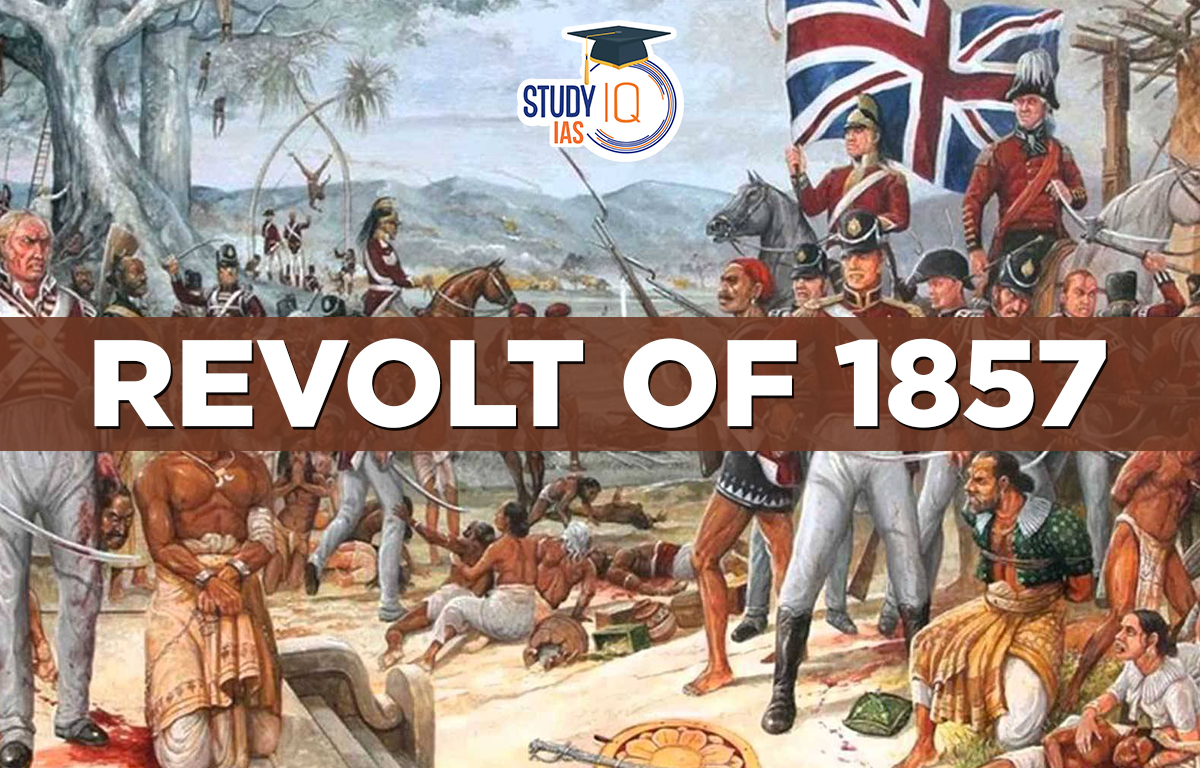Table of Contents
Context: The Mutiny Memorial, built in Delhi in 1863 to honour those who had fought from the British side in the Delhi Field Force, during the Revolt of 1857, later was re-dedicated to also honour those Indians who lost their lives fighting the British.
About the Memorial
- The Memorial, which is a tapering four-tier red sandstone structure rising from an octagonal base on the Northern Ridge, is located a few feet away from an Ashokan pillar.
- The structure is prolifically inscribed with written accounts of the revolt.
- It was constructed in 1863 on the site of the artillery unit known as Taylor’s Battery, which bore the brunt of rebel fire and has an indifferent gothic design.
The Revolt of 1857
- The revolt of 1857 was the conscious beginning of the struggle for Independence against the colonial rule of the British.
- The revolt is also known as India’s First War of Independence, Sepoy Mutiny, etc.
- The revolt began on May 10, 1857, at Meerut as a sepoy mutiny, initiated by sepoys in the Bengal Presidency against the British officers that eventually secured the participation of the masses.
- It was fairly widespread but unsuccessful rebellion against the rule of British East India Company in India during the reign of Governor General Canning.
Causes of the Revolt
| Causes | Trigger behind the Uprising |
| Immediate Causes |
|
| Political Causes |
|
| Social and Religious Causes: |
|
| Economic Causes |
|
| Military Causes |
|
Predominant Leaders of the Revolt
| Places of Revolt | Indian Leaders | British Officials suppressing the revolt |
| Delhi | Bahadur Shah II | John Nicholson |
| Kanpur | Nana Saheb | Colin Campbell |
| Lucknow | Begum Hazrat Mahal | Henry Lawrence |
| Bareilly | Khan Bahadur Khan | Colin Campbell |
| Allahabad and Banaras | Maulvi Liyaqat Ali | Colonel Oncell |
| Jhansi & Gwalior | Lakshmi Bai &Tantia Tope | Hugh Rose |
| Bihar | Kunwar Singh | William Taylor |
Reasons for the Failure of the Revolt
- Lack of coordination: The rebels were not organized, and there was no central leadership. This lack of coordination led to confusion and disunity among the rebels, which ultimately weakened their efforts.
- Limited military resources: The rebels were not well-equipped or trained to fight against the British army, which had superior military resources, modern weapons, and a well-established command structure.
- Limited geographical reach: The revolt was primarily limited to northern and central India. The lack of a wider geographic spread limited the scale and impact of the rebellion.
- Lack of popular support: The rebellion did not receive widespread popular support. Many Indians, particularly the landed aristocracy, were not interested in challenging the British colonial rule.
- British strategic response: The British quickly mobilized their military and logistical resources to suppress the rebellion. They also used tactics such as divide-and-rule, which exploited regional and religious divisions among the rebels.
- Economic interests: The British were able to use their economic power to co-opt Indian elites and build alliances with them, which further weakened the rebels’ efforts.
Consequences/ Impacts of the Revolt
- End of the East India Company’s rule: The revolt marked the end of the East India Company’s rule over India. The British government took over the administration of India from the East India Company and made India a British colony.
- Changes in British policy: The British government implemented significant policy changes after the revolt, such as the end of the Doctrine of Lapse, which had allowed the British to annex Indian states, and the introduction of the Indian Councils Act, which allowed for greater Indian representation in the colonial government.
- Political consciousness: The revolt gave rise to a new sense of political consciousness among Indians. It inspired nationalist movements and paved the way for the Indian independence movement.
- Military reforms: The revolt exposed the weaknesses of the British military. After the revolt, the British government reorganized the Indian Army and recruited more European soldiers to reduce their dependence on Indian soldiers.
- Economic impact: The disruption caused by the revolt led to a decline in agricultural production, and the British government introduced new economic policies to promote industrialization and increase exports from India.


 TNPSC Group 4 Admit Card 2025 Out at tnp...
TNPSC Group 4 Admit Card 2025 Out at tnp...
 Species Added to India's Flora and Fauna...
Species Added to India's Flora and Fauna...
 Daily Quiz 02 July 2025
Daily Quiz 02 July 2025





















